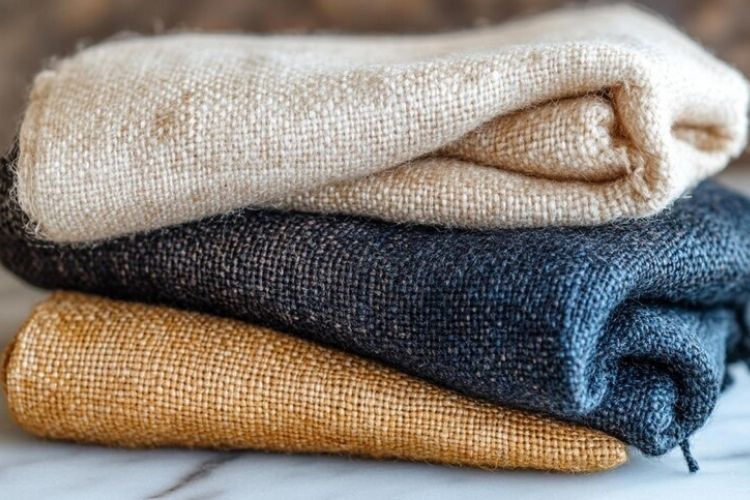Have you ever stopped to think about the environmental cost of the clothes you wear? Beyond style and comfort, the fabric itself carries a story of water, chemicals, and energy. That’s where organic textiles step in. Today, many organic fabric manufacturers in India are leading a quiet revolution—proving that sustainability can be woven into every thread.
Why Organic Fabrics Matter
Unlike conventional cotton or synthetic fibers, organic fabrics are grown without harmful pesticides and processed using safer, eco-friendly techniques. This approach reduces soil degradation, preserves biodiversity, and helps conserve water—something particularly urgent when you realize that fashion is one of the world’s largest water-consuming industries (UNEP).
Also Read: How to Choose Safe and Non-Toxic Baby Clothes
Key Environmental Benefits
1. Reduced Water Usage
Organic cotton, for instance, requires significantly less water compared to conventional cotton farming. Farmers rely more on rainfall rather than irrigation, which lowers strain on local water systems.
2. Cleaner Soil & Air
Because no chemical fertilizers or pesticides are used, soil retains its natural fertility longer. The absence of toxic sprays also means cleaner air for farming communities and healthier crops.
3. Lower Carbon Footprint
Processing organic fabrics typically involves fewer synthetic dyes and energy-intensive treatments, resulting in a reduced carbon footprint for each garment produced.
Essential Techniques in Organic Fabric Production
- Crop Rotation: Farmers rotate crops to maintain soil health, avoiding the depletion common in monoculture practices.
- Natural Pest Control: Instead of chemicals, natural predators or companion plants keep pests at bay.
- Eco-Friendly Dyeing: Many organic fabrics use plant-based dyes or low-impact alternatives, lowering water pollution.
The Role of Indian Manufacturers
India has become one of the largest producers of organic cotton worldwide, with thousands of farmers transitioning to eco-friendly methods. Several viscose yarn manufacturer brands are also incorporating sustainability by blending biodegradable fibers with organic cotton for versatile fabrics. This growing movement doesn’t just serve global demand—it supports rural livelihoods too.
How the Supply Chain is Changing
The shift isn’t just happening at the farm level. Textile mills, spinning units, and dye houses are all rethinking their processes. For example, a spinning mill in Gujarat may now use energy-efficient machinery and water-recycling systems to produce yarns responsibly.
Everyday Choices That Make a Difference
As consumers, we may not control how crops are grown, but we do control where our money goes. Opting for clothing made of organic cotton, hemp, or bamboo fabric can help tip the scale. Even choosing brands that are transparent about their supply chain can encourage others to adopt eco-conscious practices.
- Look for certifications like GOTS (Global Organic Textile Standard).
- Support brands committed to fair trade and sustainable production.
- Care for your clothes properly—organic fabrics often last longer, reducing waste.
FAQs
What makes organic fabric different from regular fabric?
Organic fabrics are grown without pesticides, chemical fertilizers, or GMOs. They’re also processed using more eco-friendly methods, reducing harm to the planet.
Is organic fabric more expensive?
Yes, slightly. However, the price reflects sustainable farming, safer working conditions, and longer-lasting fabric quality—making it a smarter investment in the long run.
Which fabrics are most eco-friendly?
Organic cotton, hemp, bamboo, and recycled fabrics rank among the top eco-friendly options available today.
Why is India a major player in organic textiles?
India’s vast cotton-growing regions, combined with increasing awareness among farmers and global demand, make it one of the world’s leading sources of organic fabrics.
Also Read: Cotton Yarn or Synthetic Yarn? A Complete Guide for Textile Buyers
Final Thoughts
Organic fabrics aren’t just about fashion—they’re about future-proofing our planet. From soil health to clean water and reduced carbon impact, every yard of organic fabric is a small step toward a healthier world. And if more of us choose wisely, those steps could quickly turn into a movement.
Blog Development Credits
This blog was made by a team that worked together and shared amazing ideas. The topic was chosen by Avranta Roy. Most of the writing was done with the help of smart tools like ChatGPT and Google Gemini. Finally, the Digital Piloto team checked it to make sure it’s easy to read, fun to learn from, and simple to find online.





